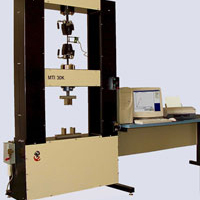Top 5 different types of bending test fixtures and where to buy them?
Bending test fixtures are used to convert the axial or rotary motions of the ELF and Instron fatigue testers into various forms of bending motions or motions that combine bending and other operations. For this purpose, Measurements Technology, Inc. has developed several bending test fixtures, all of which are based on the principal function of the test. These fixtures are designed to store a statistically meaningful number of specimens and are often changed to meet the customer's device design's test needs. All of these test settings can be employed with PBS baths or fluid flow to create physiologically realistic environmental conditions. The types of bending tests done are described in the following list of bending test fixtures:
(You can also visit our website to know more in
detail)
The pure bending test fixtures:
A bending moment is applied to the device's proximal
and distal ends, resulting in a pure bending configuration at the device's
center in pure bending test fixtures.
Bending test fixtures with a cantilever:
The proximal end of the specimen is fixed while the
distal end is displaced orthogonally in cantilevered bend test fixtures. As a
result, the component of the gadget closest to the fixed end bends.
The Combined cantilevered/pure bending test fixture:
In the combined cantilevered/pure bending test fixture,
the proximal end of the specimen is fixed while the distal end is moved along
an arc with a fixed radius. This test is known as the "wag" test
because it resembles the wagging of a tail. The specimen can be wrapped around
a mandrel with a known radius or it can "discover" its own radius of
curvature.
Bending test fixtures with a constant radius:
Bending fixtures with a constant radius are intended to
apply a bending moment at a specified radius. This form of testing is referred
to as "bending on a mandrel." With this procedure, the proximal end
of the specimen is stationary while the distal end is moved in an arc. To
ensure that the bend has a constant radius, the specimen is bent over a
predetermined radius mandrel. This test can be used to generate both positive
and compressive stresses that are predictable.
The shear-induced bending test fixtures:
Shear-induced bending test fixtures bend and shear the
device by applying a shear motion to one or both ends of the specimen. The
specimen is normally allowed to determine its own radius of curvature based on
the applied motions.
Visit our official website for your bending testfixtures requirements and we will provide an estimate for creating the applied
bending you are looking for.




Comments
Post a Comment